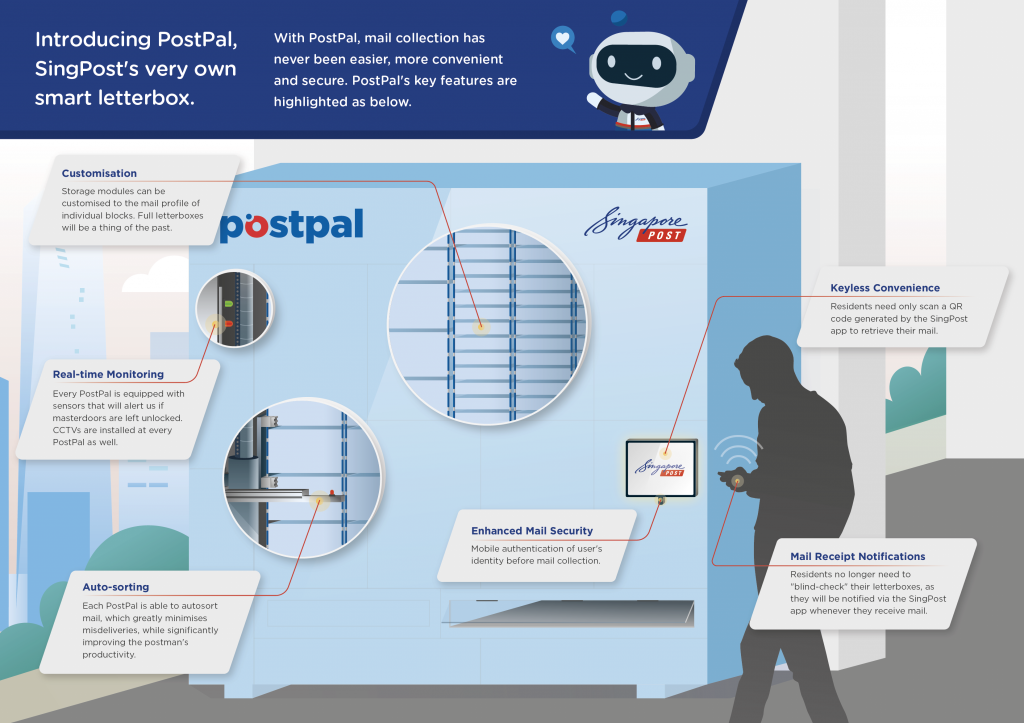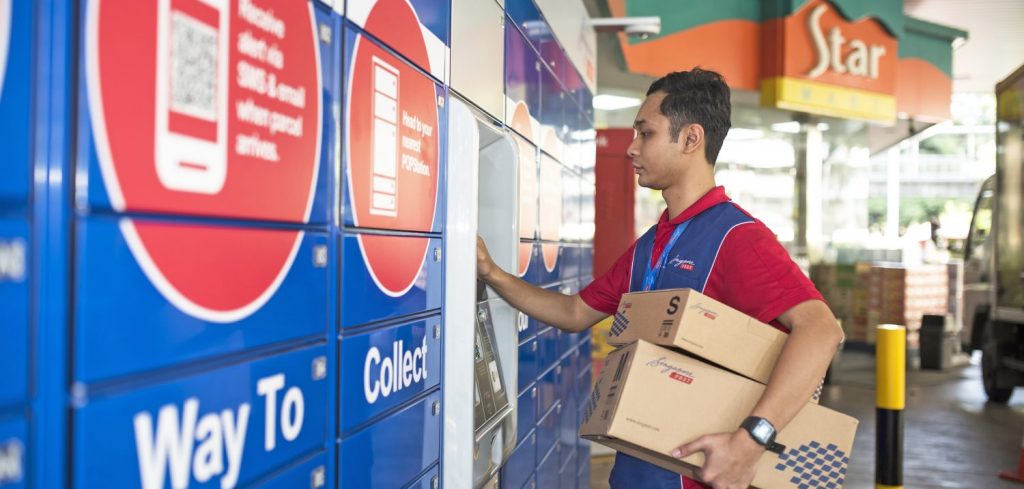The current Covid-19 crisis has brought major disruptions to our way of life. As a country that depends heavily on global trade and supply chains, the inability to move goods freely within and across borders due to lockdowns imposed in various countries worldwide has posed significant challenges for Singapore as a whole.
SingPost, together with all postal organizations around the world, has been severely affected by Covid-19. Here in Southeast Asia, postal organizations have been hit by manpower challenges, service suspensions and inventory backlog, with deliveries delayed by weeks and even months. SingPost has been working tirelessly with postal counterparts to identify non-traditional means of delivering across borders, given the dearth of aviation connections. But the dynamic circumstances caused by a constantly evolving situation in 200 countries on a daily basis have made the already gargantuan task even more daunting.
The Universal Postal Union’s (UPU) latest report on the Covid-19 impact to global postal operations states, “International flows have been disrupted… with an increasing number of postal items ‘stranded’ in the ‘logistical no man’s land’ between sender and receiver. Delivery and customs clearance times have lengthened, and some international postal bilateral liaisons are not open for private dispatches.”
New delivery streams
That said, Covid-19 has brought about a significant uptick in e-commerce transactions for both essential and discretionary items. In 2019, Singapore’s total online retail penetration constituted less than 10% of all retail transactions. Data from multiple studies has consistently shown an almost threefold surge in online penetration to 17% in June to August 2020, even as total retail sales plunged 40%, including figures from brick-and-mortar stores. SingPost experienced an unprecedented 40% surge year-on-year in e-commerce deliveries during the same period, with our postal service responsible for delivering almost half of these volumes.
Of particular interest is the evolving profile of orders as the circuit breaker (lockdown) period progressed. In the initial weeks, consumers were focused on purchasing essential goods and groceries. As the circuit breaker progressed, more discretionary purchases like fashion apparel, electronic games and appliances were made, a strong indicator of rising consumer confidence in e-commerce retail, and a growing acceptance that digital shopping is a worthy replacement to the physical shopping experience.
Covid-19 has also pushed the norms in other sectors. SingPost launched its island-wide medicine delivery service in April 2020, which includes temperature-sensitive supplies that require special handling. We have also recently been appointed by the government to provide deliveries of high-security items such as passports and identity cards. The acceptance of delivery services by medical and security agencies represents a breakthrough for the logistics industry and highlights the latent appetite for e-commerce and the feasibility of physical deliveries for all categories of products.
It is clear that Covid-19 has had the unexpected effect of being a shot in the arm for the growth of the e-commerce sector – the pandemic has acted as a catalyst for consumers stuck at home to adopt this more sedentary form of purchasing. This trend is likely to stay, and will cause lasting changes to consumer behavior. The logistics sector stands to reap the fruits of this evolution as well, if we are able to overcome the obstacles that the pandemic has placed in stark relief.
Challenges of last-mile logistics
On the operational front, the logistics industry has had to grapple with reduced productivity from the mandatory imposition of health protocols, as well as a labor crunch precipitated by neighboring countries’ border closures. These translated into delivery delays across the board, an undesirable outcome especially during these times.
More broadly, the domestic last-mile delivery sector remains highly fragmented, being heavily reliant on labor and transportation. All last-mile providers employ the same resource- and fleet-heavy operational flow: individual drivers in vans who deliver goods to homes. It is estimated that for every 10% growth in e-commerce parcels, there is a corresponding 8.3% increase in fleet size. This is a significant increase in emissions and congestion for the city state if there is no structural solution in terms of aggregation. In labor-scarce Singapore, being reliant on this operational model is also inefficient, inadequate and clearly not sustainable.
While we expect some relief from the tentative restoration of international air capacity, and the gradual relaxation of domestic safeguarding measures, the logistics industry will need to step up if it wants to make online retail a worthy replacement to the traditional buying experience. Logistics will need to be faster, more resilient, less subjected to manpower-related challenges, and offer a better customer experience from point of sale to delivery. Scalability and agility will be key, as well as the need to leverage technology to cater to this shift.
Investments for the future
It is therefore important to invest in urban infrastructure that will allow us to efficiently operate this last-mile delivery network. The government’s nationwide parcel locker network is one example of infrastructure that will assist in making urban deliveries more seamless. By end-2021, all neighborhoods will be equipped with open-access parcel lockers, providing even more incentive for shoppers to purchase online, and creating a more efficient alternative to doorstep deliveries for delivery personnel.
As post – with its cost-efficiency, familiarity and prevalence – is the primary mode for e-commerce items to be delivered, SingPost has also been developing new technologies and solutions to better serve e-commerce customers. Trackability features to the postal service were introduced last year, providing higher delivery assurances for customers while maintaining the cost effectiveness of the mail network delivery to letterboxes.
We are currently reviewing our entire postal workflow to prepare for an e-commerce-driven future. This ‘Future of Post’ project aims to revamp the decades-old national postal system to be more adept at e-commerce package deliveries. Pioneering technologies such as smart letterboxes (PostPal) that can dispense both mail and e-commerce packages securely via keyless authentication, smart stamps that allow even basic mail to be tracked as well as an overhaul of the entire postal workflow, are in the works, and the public will be able to experience some of these world-first technologies in the coming months.
Covid-19 has given us a glimpse of what the future of e-commerce can be, but it has also shone a harsh spotlight on the industry’s need to reengineer the logistics network, and invest in e-commerce-friendly infrastructure. We must create a dependable, cost-effective and reliable delivery system that can deal with high-velocity, high-assurance high-volume deliveries nationwide. The postal service has the ingredients to underpin this urban logistics requirement, but we need to enhance and shape it for the future.
Deputy Prime Minister of Singapore Heng Swee Keat has called for all industries to relook at traditional processes to meet the challenges of the post-Covid world, and the logistics industry should heed this call. Should we succeed, we can solidify Singapore’s reputation as a trusted and resilient supply chain node for global e-commerce flows.



